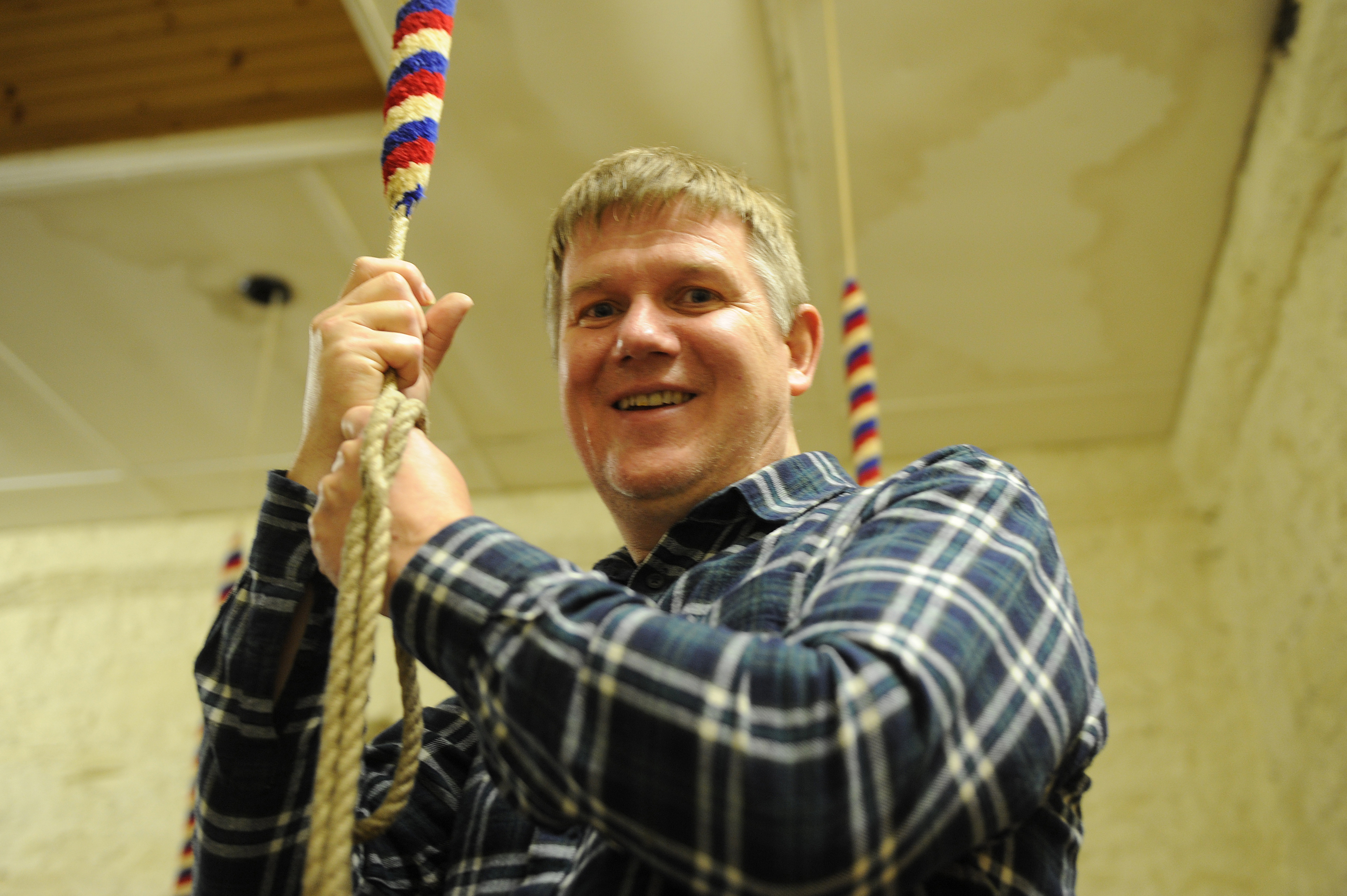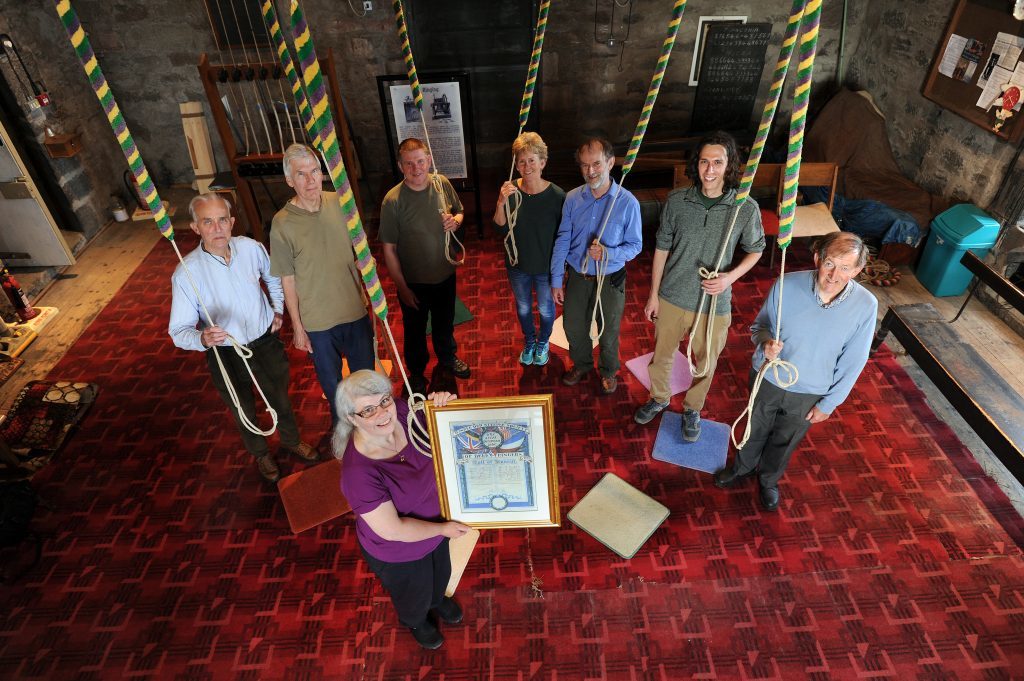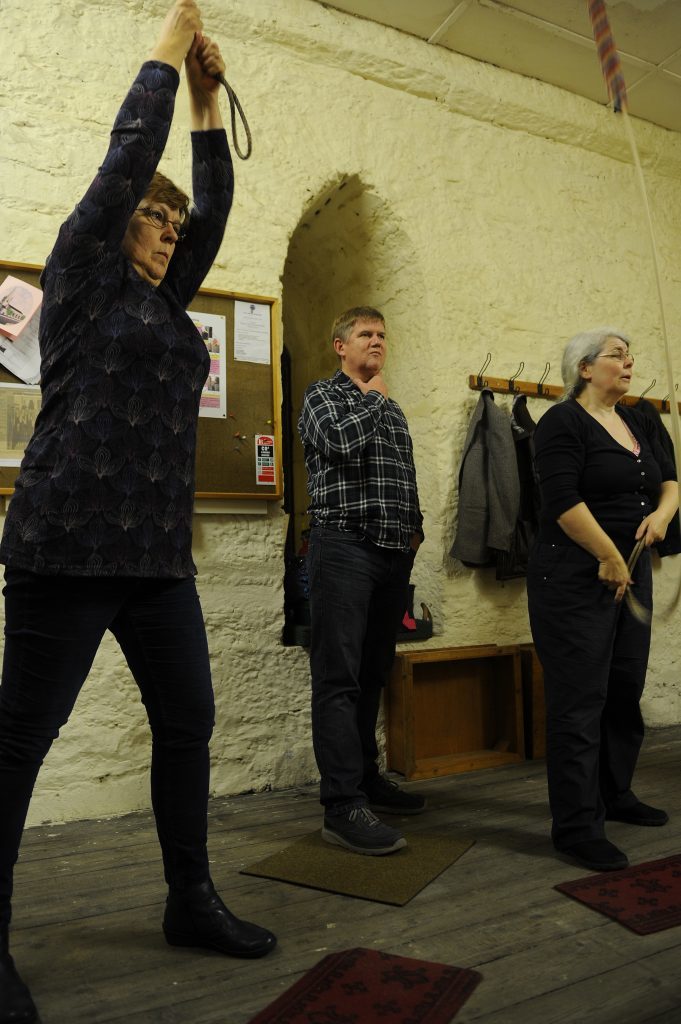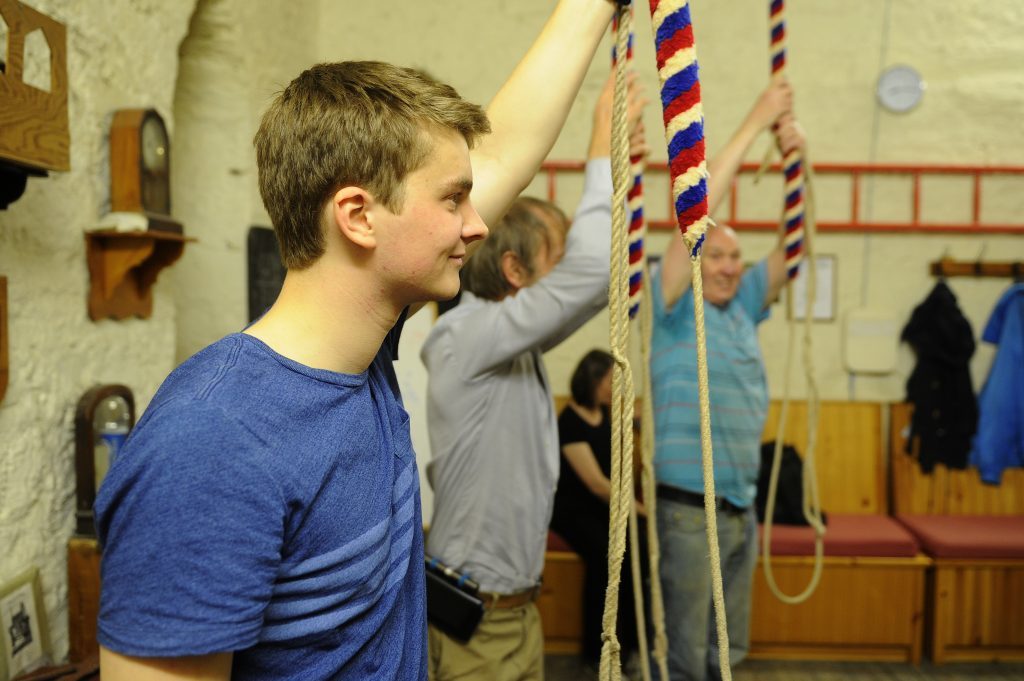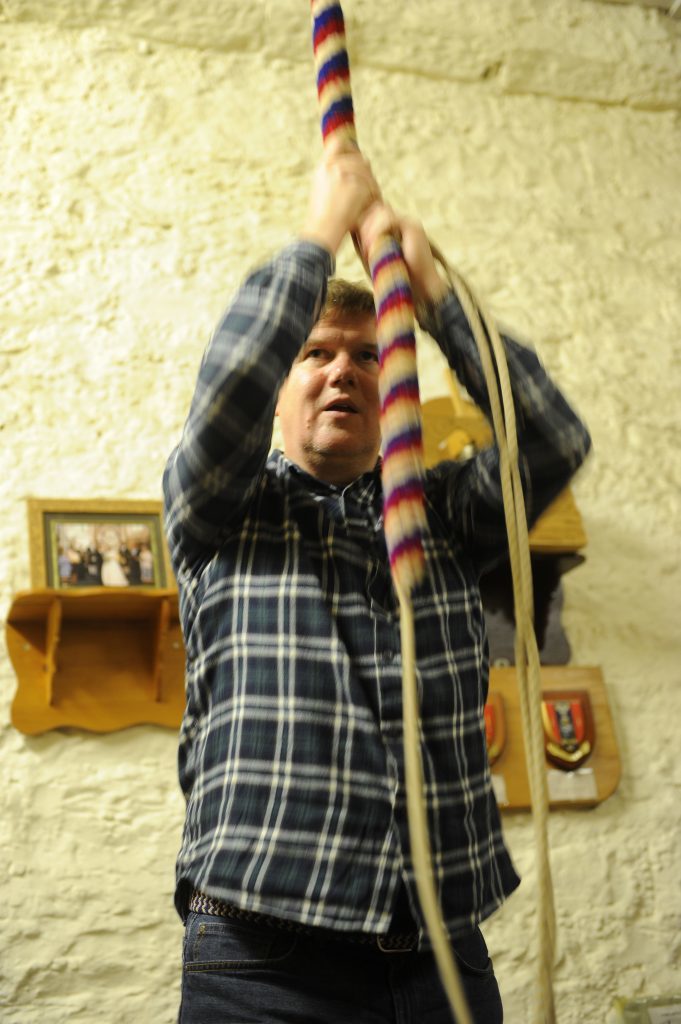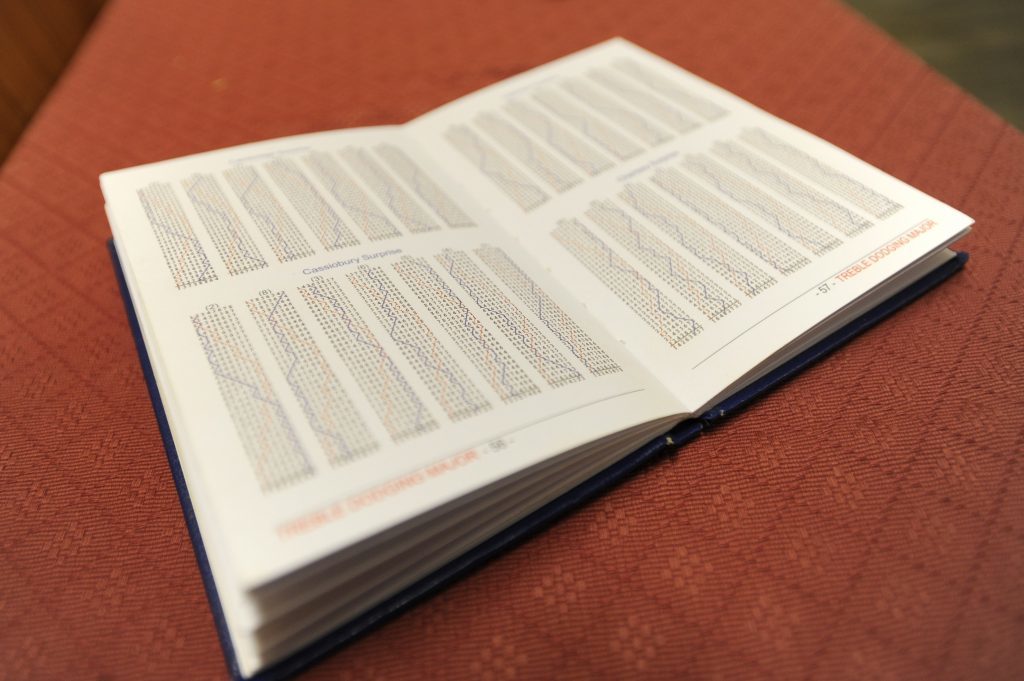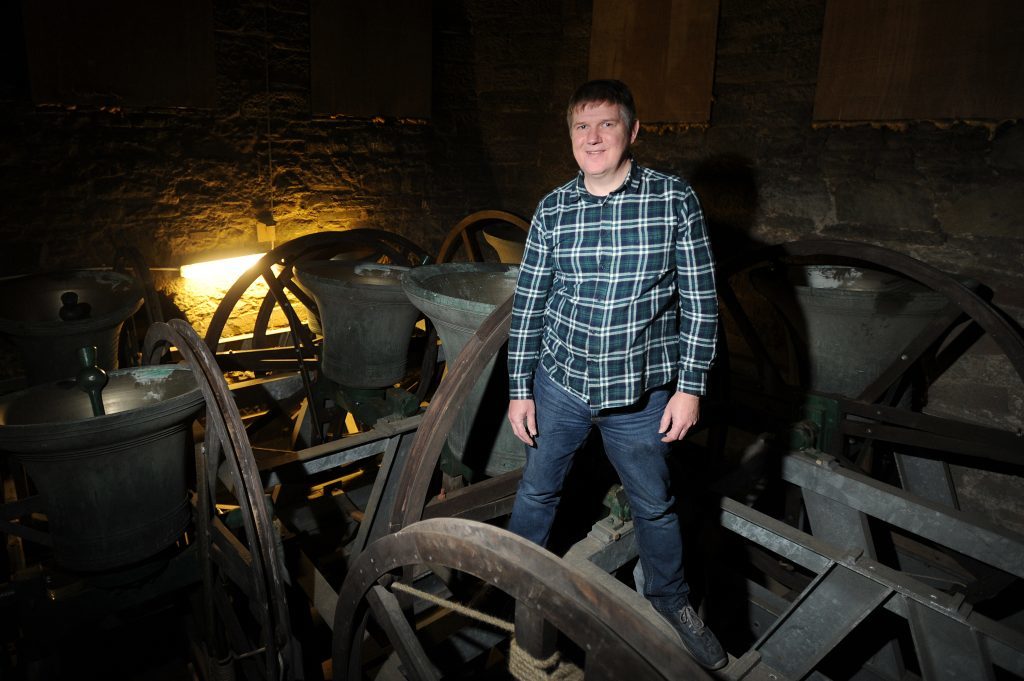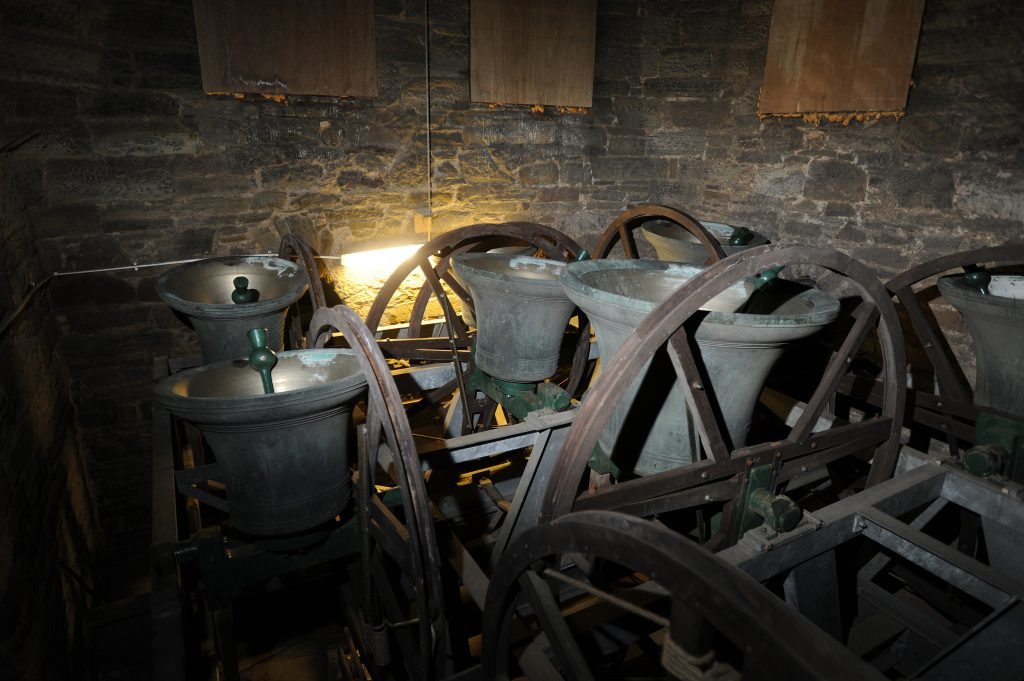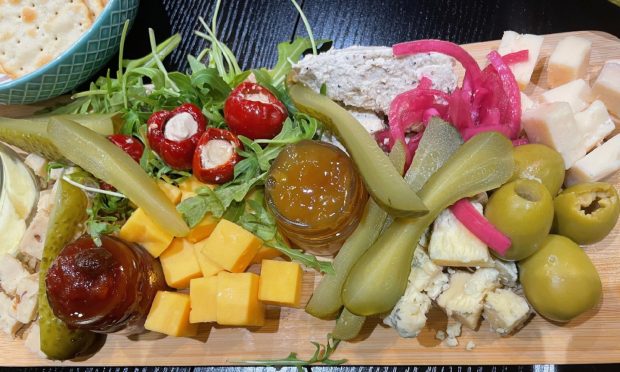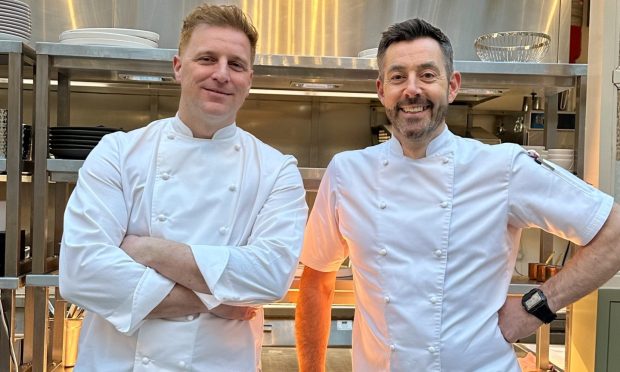Bell ringer Peter Valuks teaches us the ropes of his ap-pealing passion
He might not have been born within earshot of Bow Bells but over the last 40 years Peter Valuks has rung every bell of significance in the country.
Peter, 51, explains how it all started after he joined a team of handbell ringers when he started secondary school in Taunton, Somerset.
“When I told the vicar of my local church he encouraged me to ascend the church tower to learn to ring the ‘proper’ bells as he called them,” recalls Peter, who lives in the Fife village of Auchtermuchty and works remotely in IT for the Financial Times.
Since then he has been on the bell ringing team at Canterbury Cathedral (where he was a student), St Paul’s and Southwark Cathedrals in London, and York Minster.
And from St Paul’s London to St Paul’s in Dundee: as master of the Dundee bell ringers he and the team ring the eight bells in the ringing chambers of the towers of St Paul’s in the High Street and the Old Steeple on alternating weeks.
He is quick to dispel the myth that ringing is hard work.
“I learned to ring as a fairly weedy 11 year old,” he laughs. “Despite the fact that you’re swinging a heavy metal object which can weigh anything from about 50kg to a few tonnes the bell is well balanced on very efficient bearings and you only have to pull hard enough to overcome the friction in those well-oiled bearings.
“The skills needed for bell ringing are a moderate sense of rhythm, physical coordination, listening and the appreciation of patterns and logic. Most people can pick these skills up as they learn to ring,” he continues.
He explains that the first challenge is to control that swing, to feel it respond to the pull and to change the speed or stop it at will. This can take a couple of months of weekly practice on a single bell.
“The next challenge is to ring with the team so that you produce a good rhythm with no clashes. This can take another month or so and at that stage you’re ready to ring for services. But you’re always learning how to produce sequences of bells which we call methods,” he continues.
“A method is a particular way of producing sequences where the bells never sound in the same order. Instead of ringing from music we imagine a wiggly line in our head called the ‘blue line’ and that defines the method.”
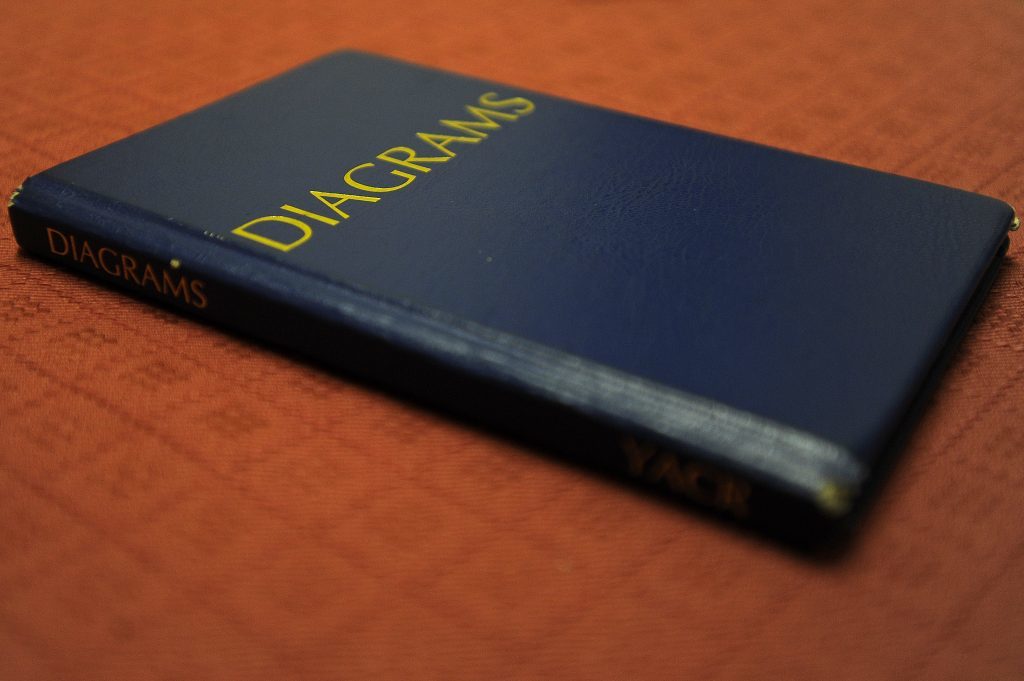 Peter and the team ring on Sunday mornings and practise on Monday evenings, as well as occasionally ringing the bells for other occasions such as weddings and special occasions like royal visits.
Peter and the team ring on Sunday mornings and practise on Monday evenings, as well as occasionally ringing the bells for other occasions such as weddings and special occasions like royal visits.
“Ringing for carol services, Christmas Day, Hogmanay and Easter Day is special as is half-muffled ringing on Remembrance Day,” says Peter. “Our bell ringing has added significance on these days and that touches us as well as the public who hear us.
“Earlier this year we rang on the 100th anniversary of the Battle of the Somme to honour the 11 Dundee ringers who fought in the First World War and whose names are recorded in the ringing room at the Old Steeple.”
Methods in the run-up to Christmas might include Plain Bob Doubles and Grandsire Triples and, if all the ringers are, there perhaps some Cambridge Surprise Major.
“One highlight of the year is the ringing in of the New Year at the Old Steeple starting just before midnight. This is the only time we’re allowed to ring the bells at an unsociable hour!” he smiles.
“I love the sense of teamwork but probably most of all there is the feeling of being at one with the bell on the end of your rope and with the other bells as you trace your path among them in a touch.”
Info
If you’re interested in finding out more email dundee@valuks.com or visit www.dundee.sacr.org
